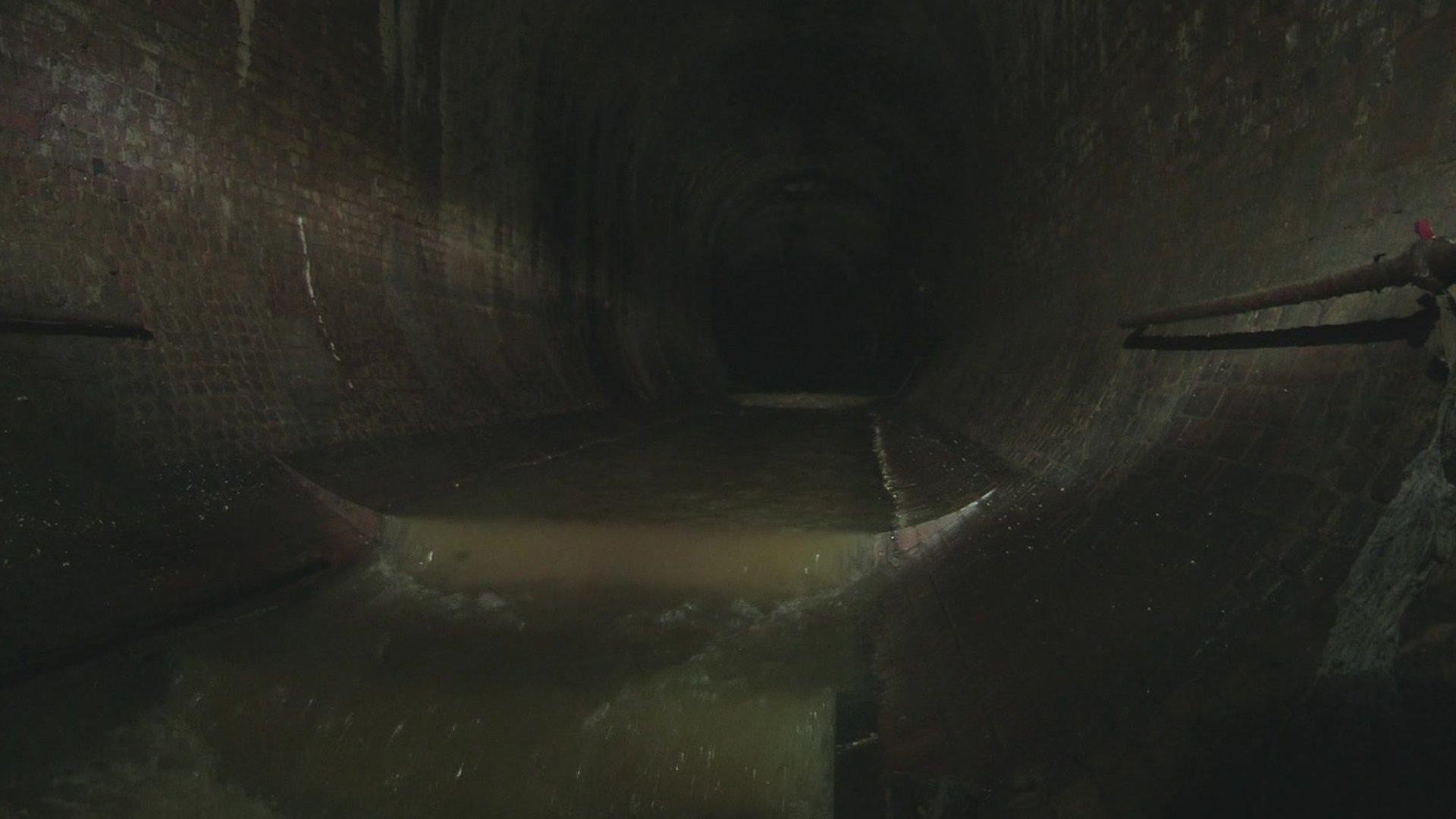Medieval skeleton in thigh-high boots found by Thames
- Published
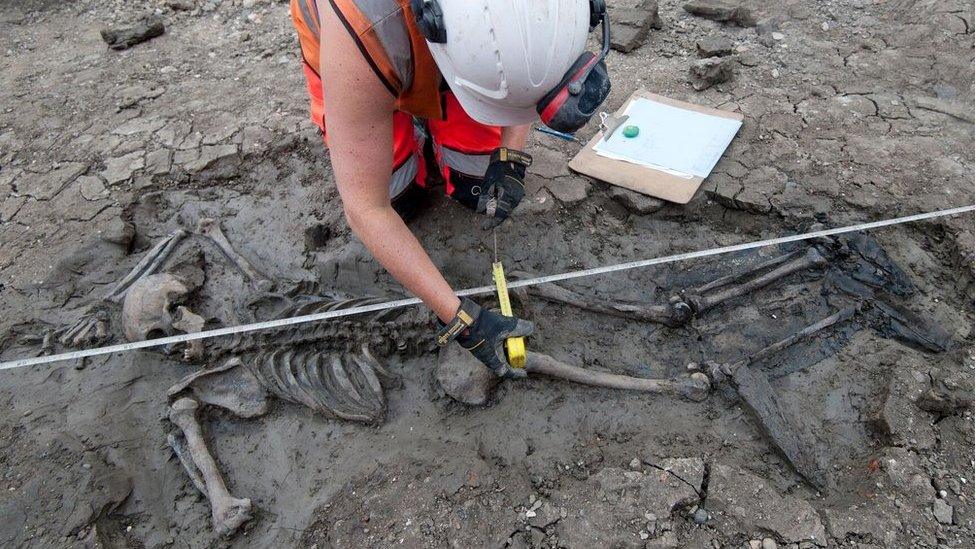
The skeleton was found with one arm above its head and the other bent back on itself to the side
A medieval skeleton wearing a pair of thigh-high leather boots has been found during excavations for London's new sewer.
The skeleton was discovered face down in mud at the Chambers Wharf site in Bermondsey during work to create the Thames Tideway Tunnel.
Archaeologists believe the man may have died during the late 15th Century while carrying out work near the river.
MOLA Headland Infrastructure said it was a "rare" and "fascinating" find.
The consortium is carrying out excavations along the route of the 15.5 mile (25km) tunnel, which is being built to tackle sewage pollution in the river.

The man's unusual boots suggest he earned his living from the river
The skeleton was found with one arm above its head and the other bent back on itself to the side.
This has led archaeologists to believe the man was not buried but quickly covered by mud after falling or drowning 500 years ago.
Beth Richardson, finds specialist at MOLA, said the boots indicated "how he may have made his living in hazardous and difficult conditions".
They would have been an expensive item normally passed on to others and, the fact they could extend to the thigh, meant they would have worked as waders, suggesting he could have been a fisherman, mudlark or sailor.
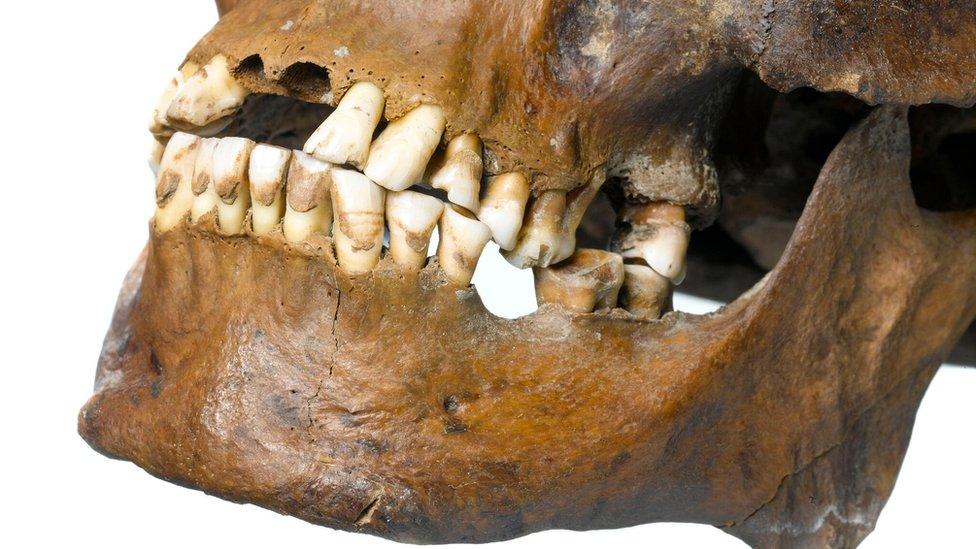
Deep grooves were found on the teeth which would have been caused by a repetitive action
Experts who have studied the bones found no evidence of any other injuries.
But they found the man, who was probably under 35, had lived a hard life.
He suffered from osteoarthritis and deep grooves were found on his teeth that could have been caused by a repetitive action such as passing rope between them - as fishermen did.
Niamh Carty, human osteologist at MOLA, said the man would have "suffered on a daily basis" from a job that took a toll on his body.
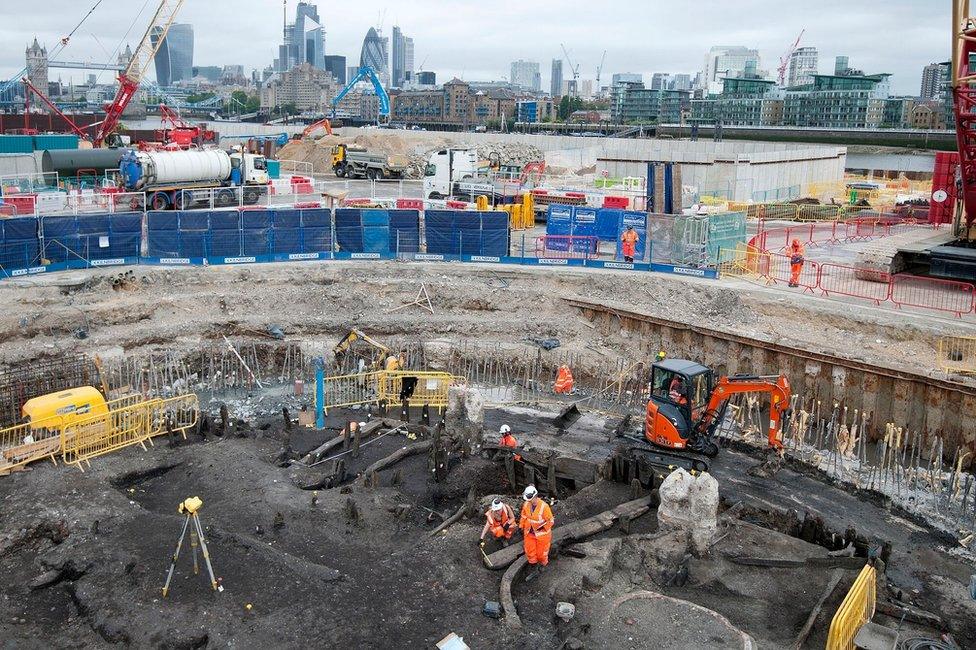
Excavations are being carried out before tunnelling work begins
A main tunnel boring machine will begin digging the super sewer at the Bermondsey site later next year.
- Published31 August 2017
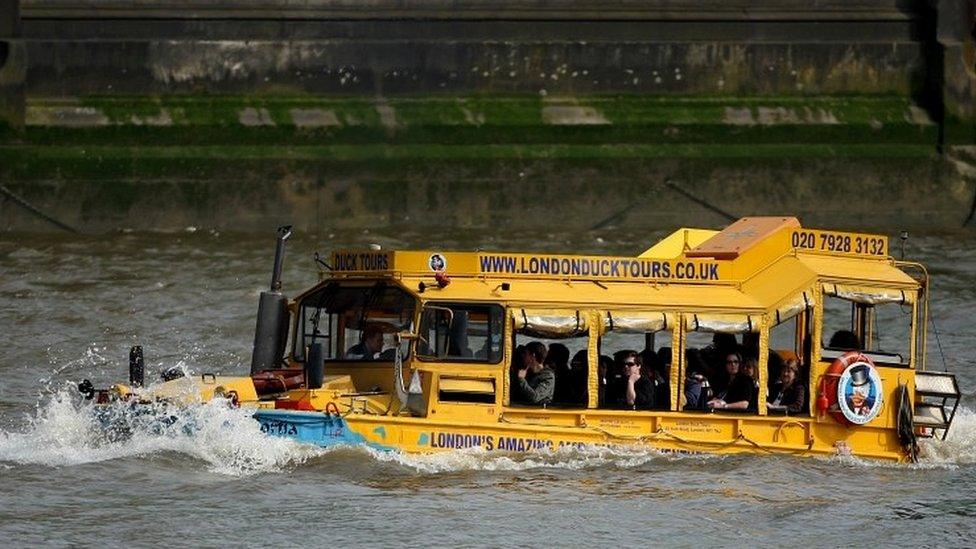
- Published12 September 2013

- Published12 September 2013
